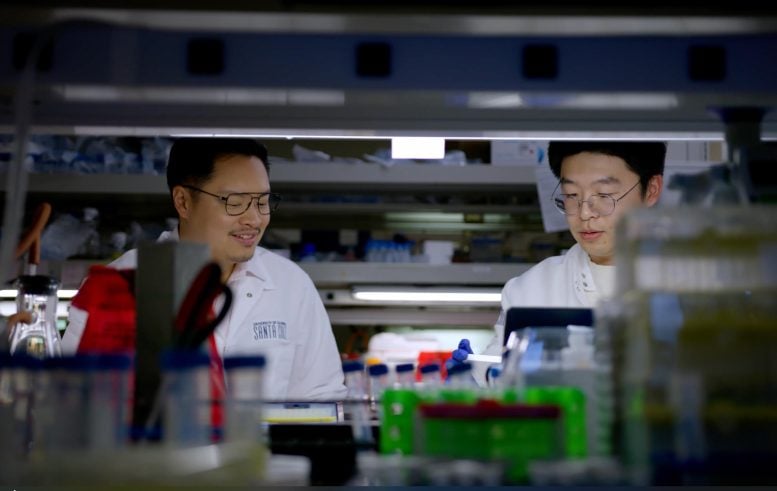
A protein-based biosensor measures cortisol with high University of California, Santa Cruz, has developed a luminescent artificial sensor that attaches to cortisol molecules in blood or urine. Once bound, the sensor produces light, which reveals the concentration of the hormone. A study published in the Journal of the American Chemical Society confirmed that this method can reliably detect cortisol across the full range of levels important for human health.
Yeh showed that the sensor could be paired with a smartphone camera, allowing cortisol levels to be measured either at home or in a clinic. This approach combines high sensitivity with affordability, eliminating the need for expensive laboratory equipment and making precise hormone monitoring far more accessible.
Designed from scratch
Yeh specializes in artificial protein engineering, which relies on AI-based computational design to create entirely new proteins rather than modifying ones already found in nature.
For this project, he built a protein-based biosensor where cortisol binding causes two engineered proteins to draw close together at the molecular level. This interaction produces a light signal, with brighter emissions corresponding to higher cortisol levels.

To Yeh’s knowledge, this is the first example of a completely computationally designed biosensor that can perform with such high sensitivity and dynamic range for detecting a small molecule analyte. Using a camera to measure the amount and color of light emitted allows cortisol levels to be read with more sensitivity than current tests provide.
Point-of-care applications
This new diagnostic tool would be in a “mix and read” format—similar to the technique used in Covid-19 nasal swab rapid tests. The test requires just a drop of blood or urine, which is mixed with a solution that contains the biosensor. Then, a smartphone camera and app could translate the light emitted into a direct measurement of cortisol levels.
“You can read the signal directly — the output of the sensor is light emissions, so essentially you can just take a picture of the test with your smartphone,” Yeh said. “Ideally, that’s really field compatible.”
Dynamic results
The test’s high level of sensitivity is a vast improvement over traditional tests, which don’t usually offer enough quantitative results when outside of the cortisol normal range. Yeh’s solution covers a wider dynamic range, offering quantitative results for healthy, too-low, and elevated levels of cortisol.
“This sensor is very, very sensitive compared to the current standard methods used in the hospital,” Yeh said. “The dynamic range is huge compared to the traditional assay.”
Down the line, Yeh envisions that this technology may also be used in a drug-development or diagnostic setting to better understand and treat the health issues that arise from cortisol deficiencies or surpluses.
Reference: “De Novo Design of High-Performance Cortisol Luminescent Biosensors” by Julie Yi-Hsuan Chen, Xue Peng, Chenggang Xi, Gyu Rie Lee, David Baker and Andy Hsien-Wei Yeh, 28 July 2025, Journal of the American Chemical Society.
DOI: 10.1021/jacs.5c05004
This research was supported by funding from the Join the SciTechDaily newsletter.
Full article can be found at: https://scitechdaily.com/revolutionary-cortisol-test-lets-you-see-stress-with-a-smartphone-camera/







